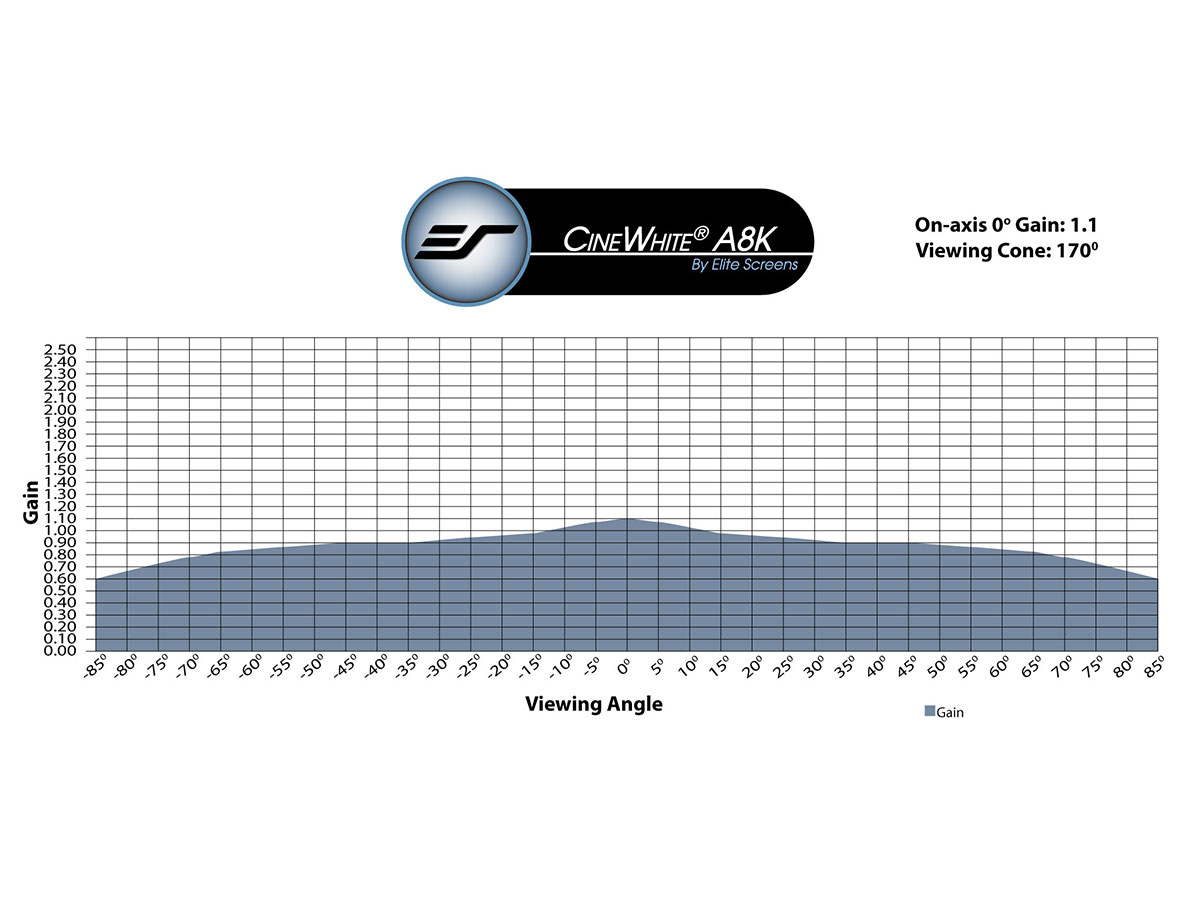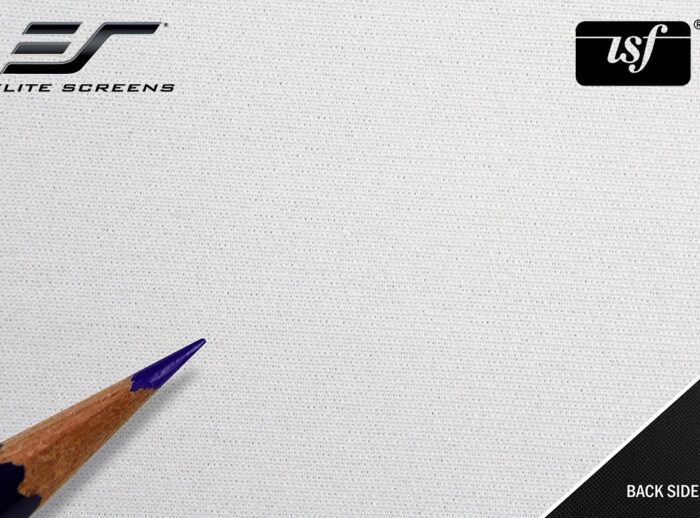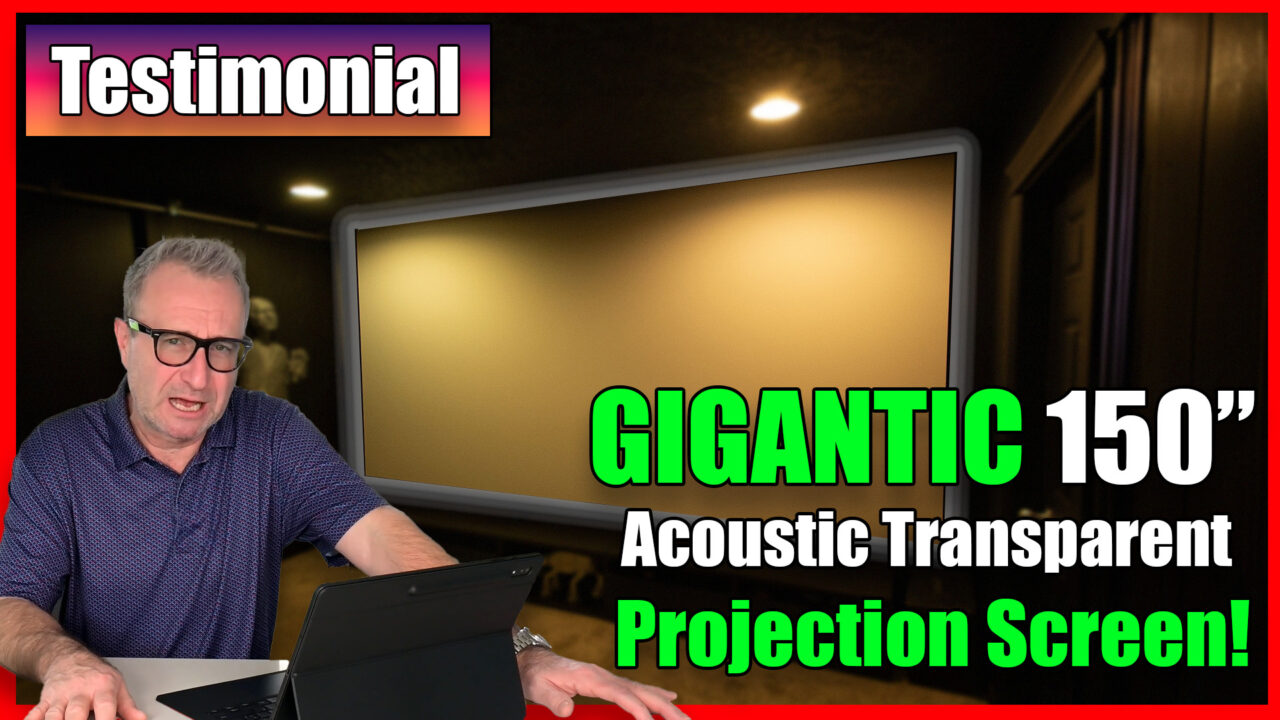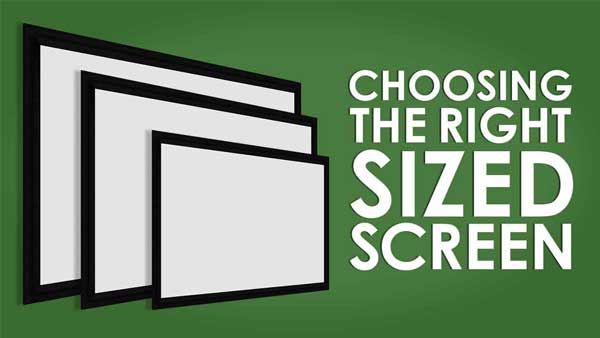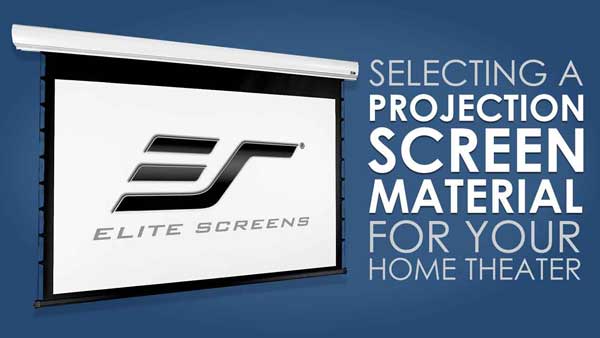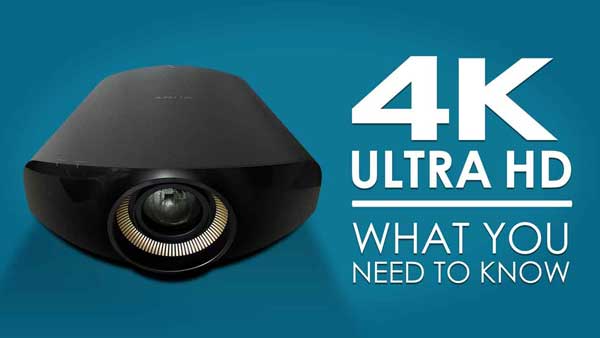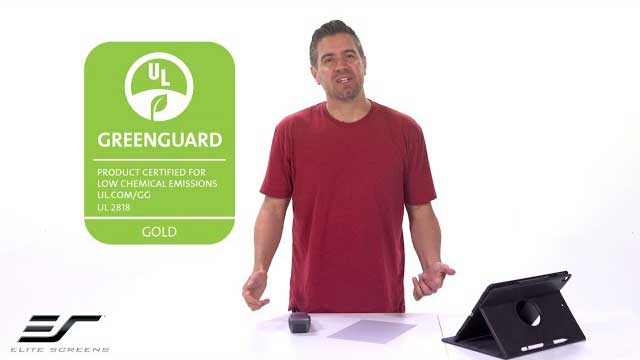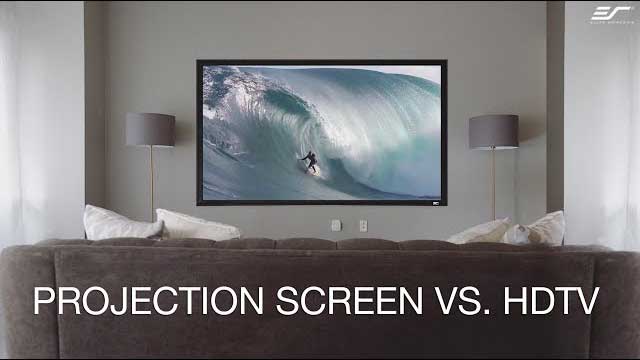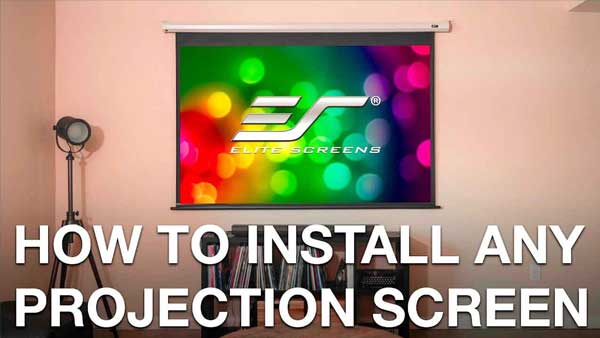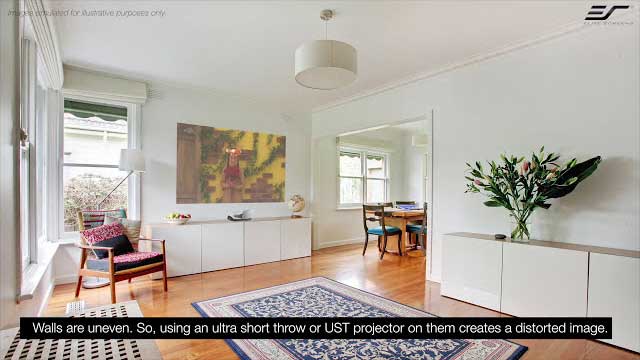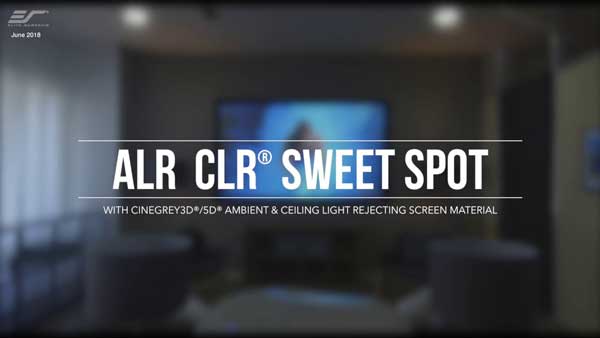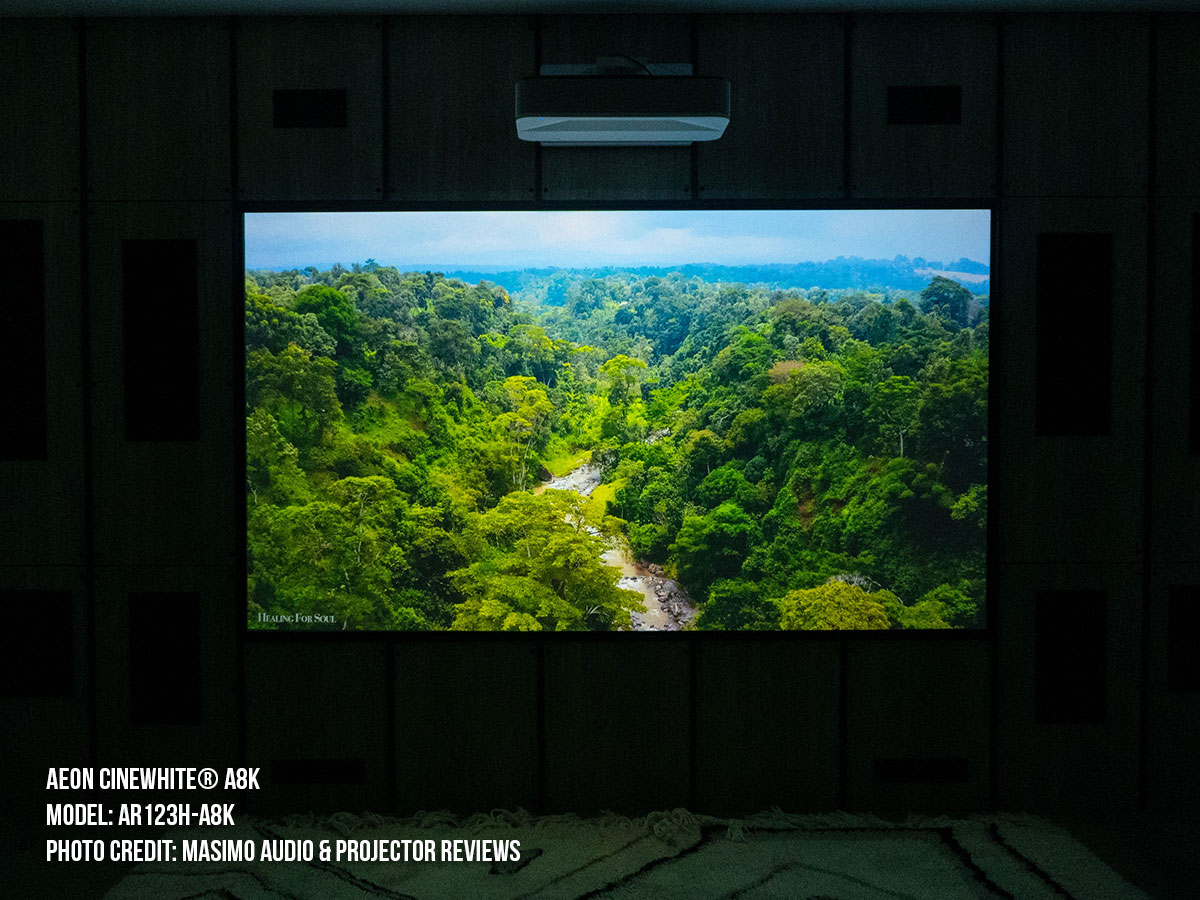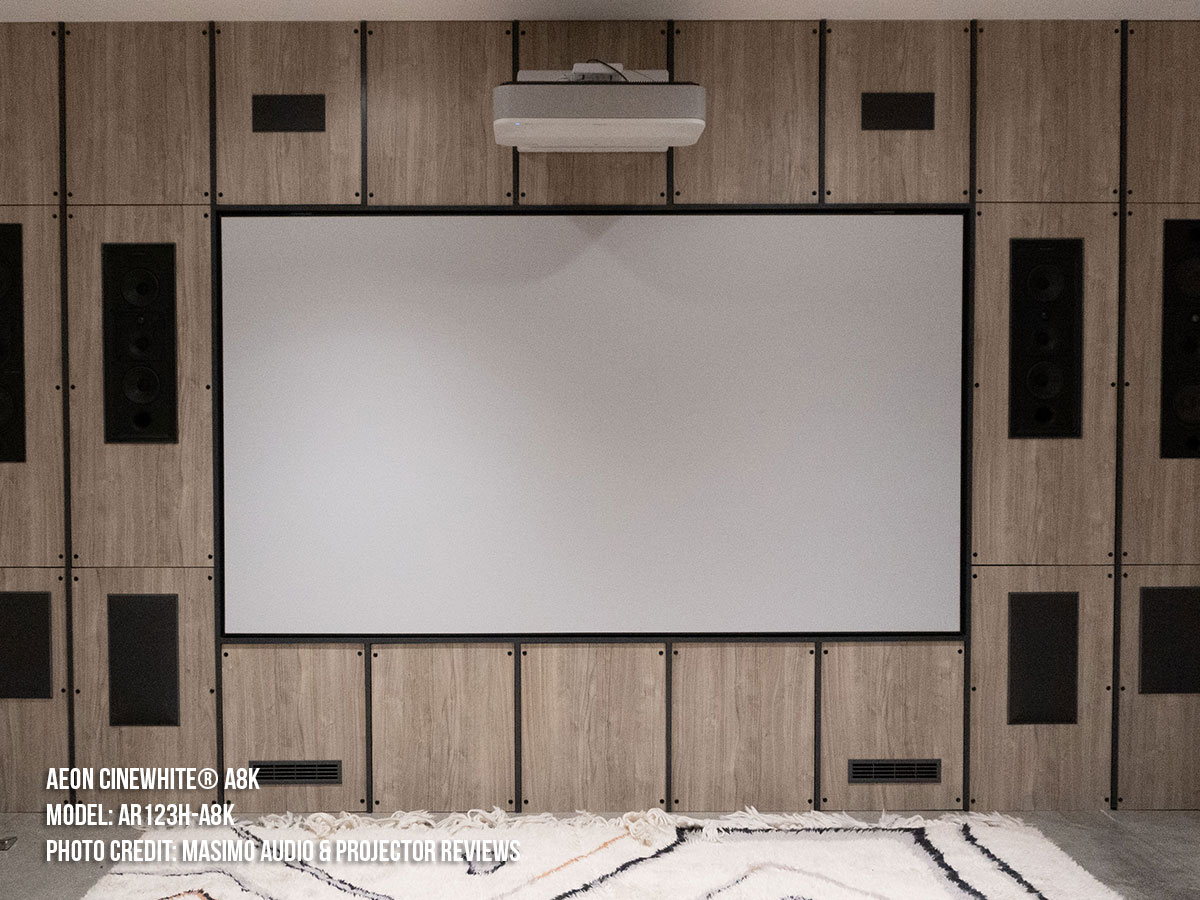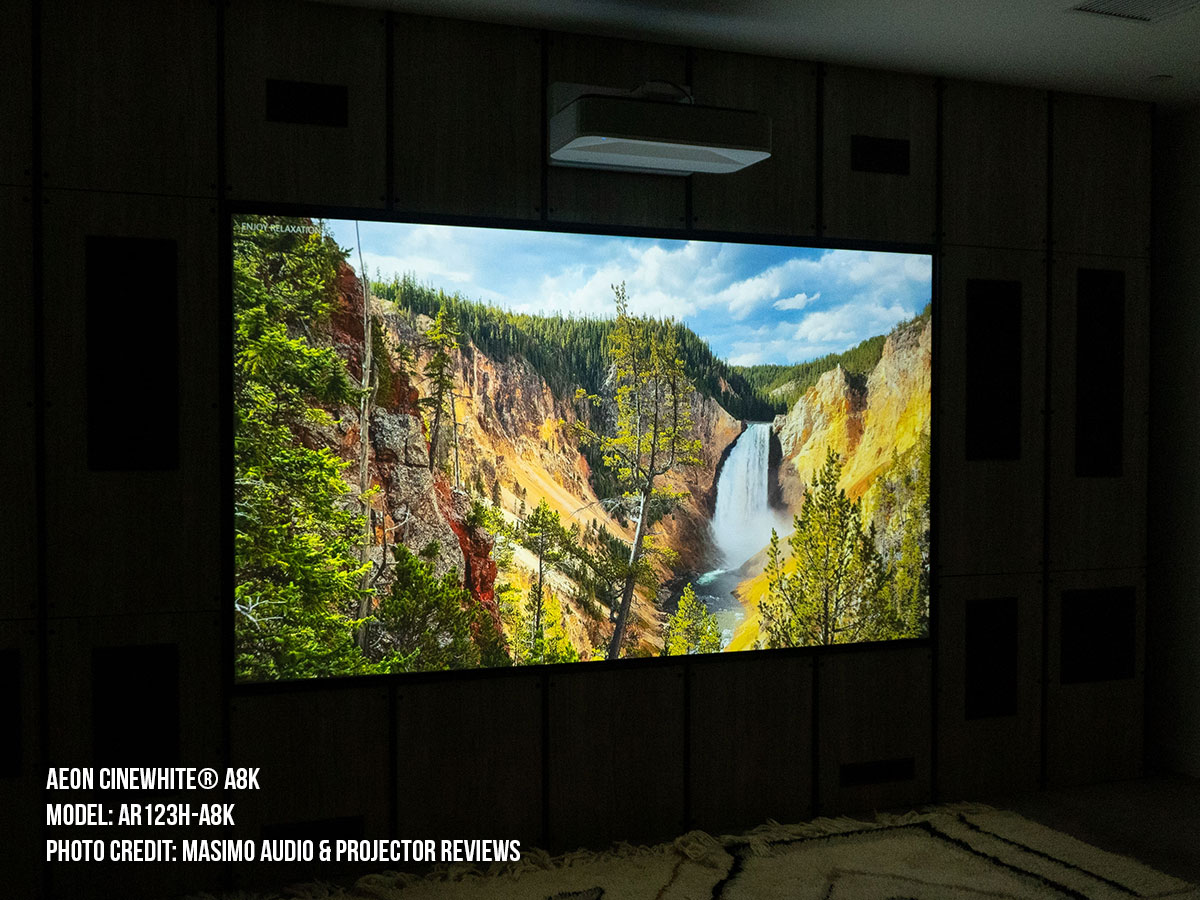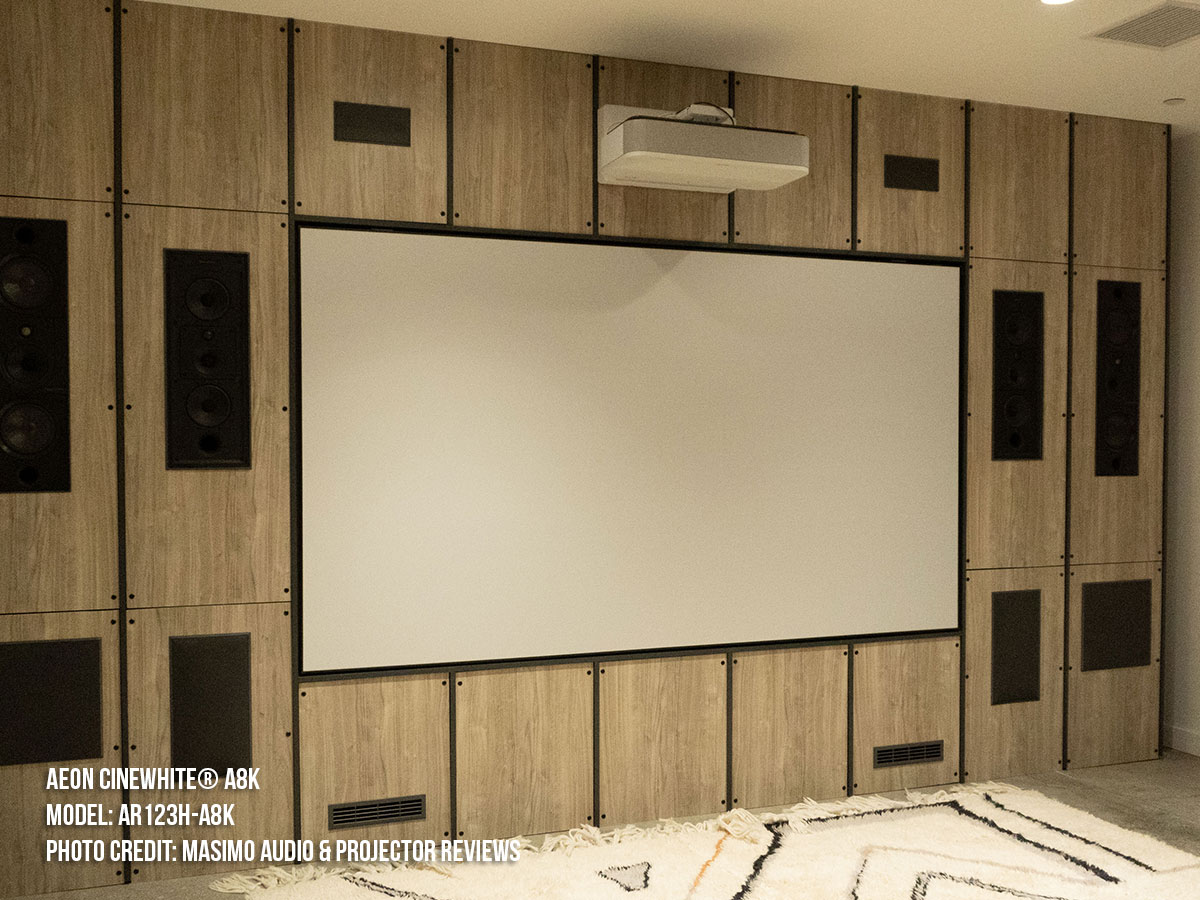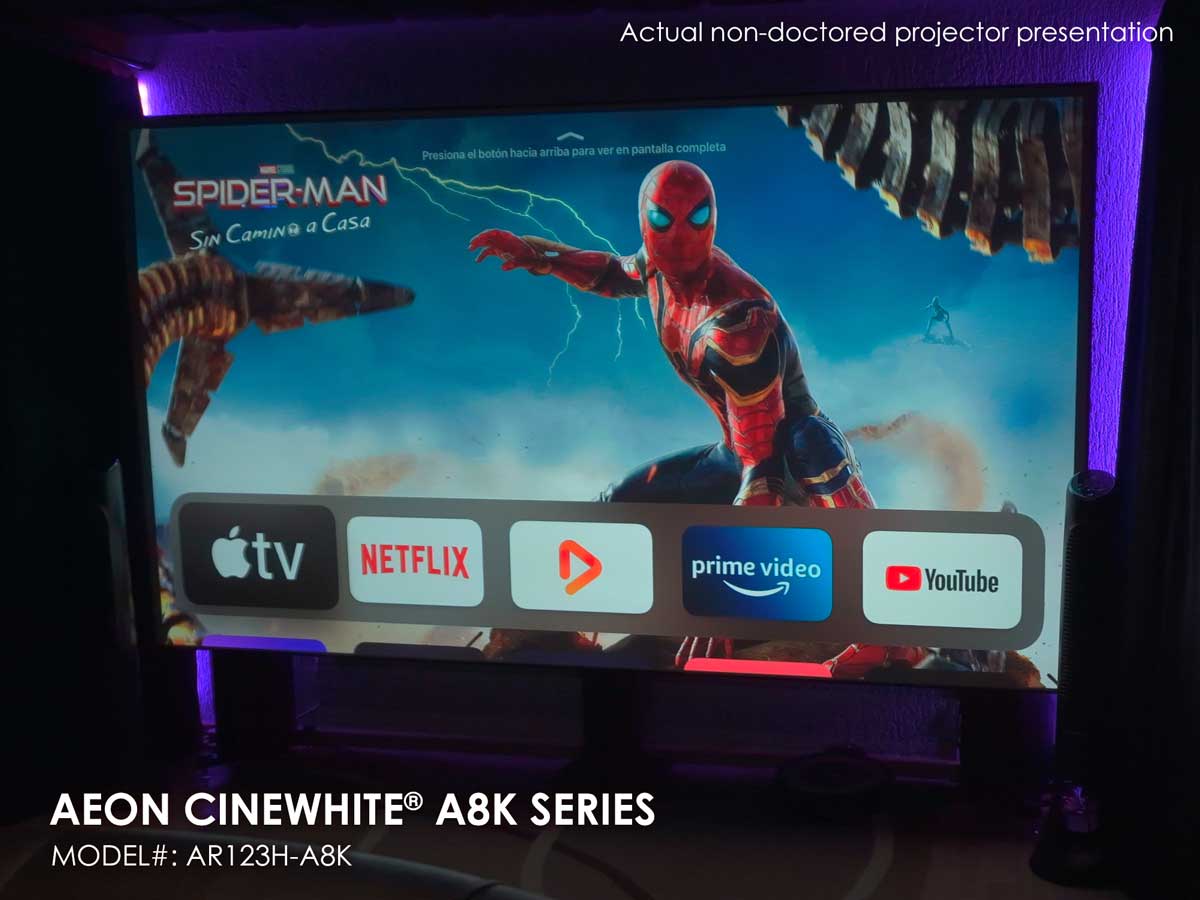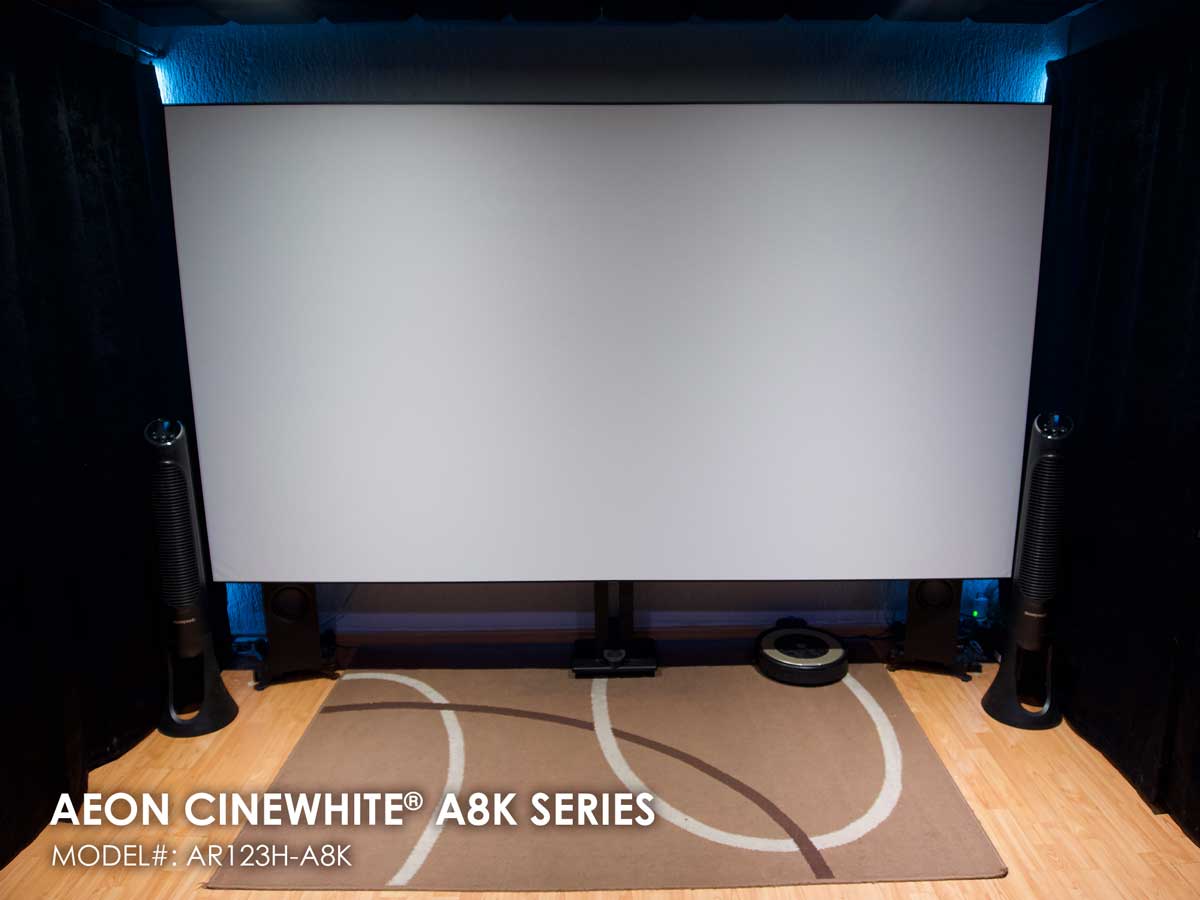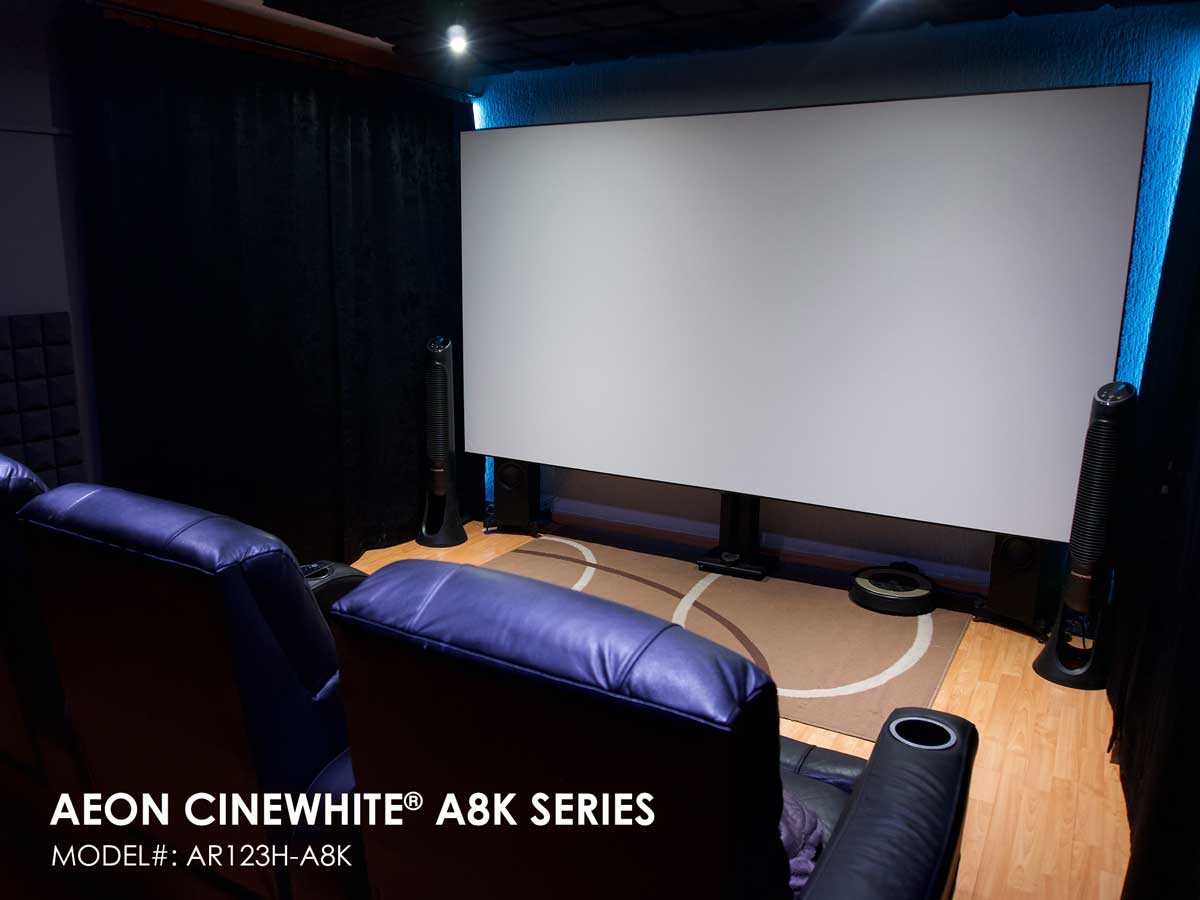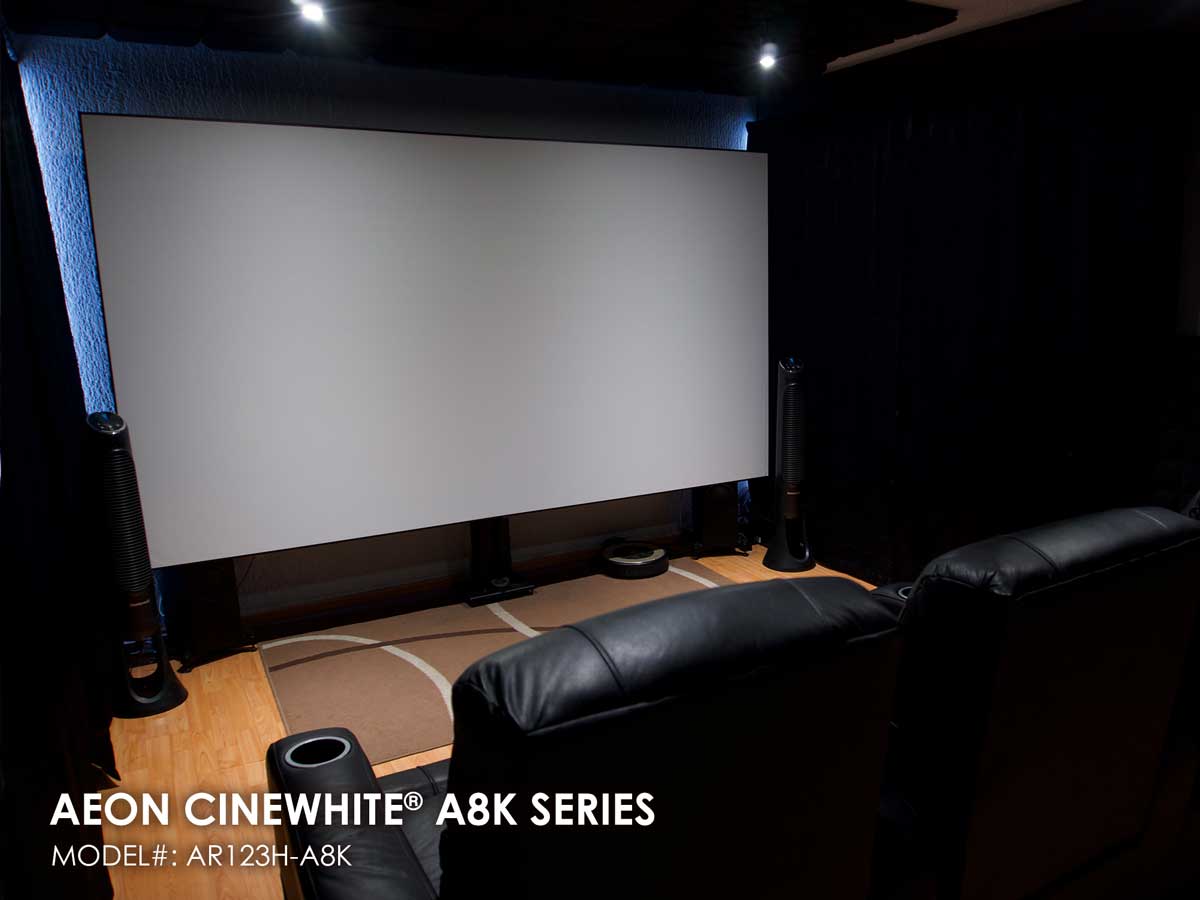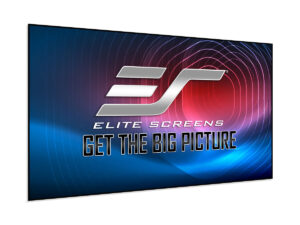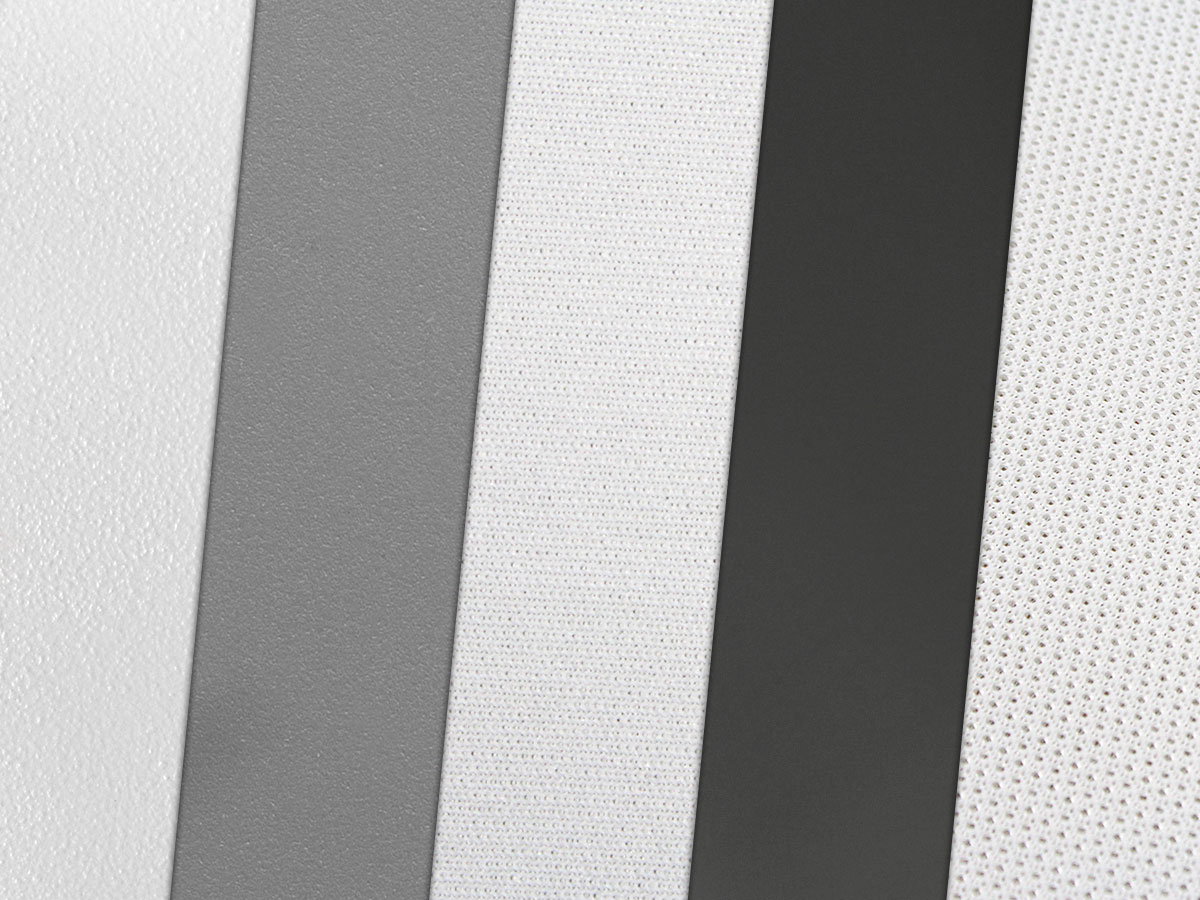Q: Is the AcousticPro UHD/CineWhite A8K/CineGrey 4D AT/CineGrey 3D AT compatible with my 3D projector?
Q: Is the AcousticPro UHD compatible with my 3D projector?The AcusticPro UHD/CineWhite A8K/CineGrey 4D AT/CineGrey 3D AT is compatible with Active 3D projectors. As the screen is not polarized, it will not work with Passive 3D applications.
Q: Can I use the AcousticPro UHD/CineWhite A8K material in a room with ambient light?
Q: Can I use the AcousticPro UHD/CineWhite A8K material in a room with ambient light?The AcousticPro UHD/CineWhite A8K performs at its best in a light controlled environment, not in a room that will have ambient light. The material is a fabric with a special weave pattern for projection use. It is suggested to go with our standard CineWhite® material if a matte white screen is needed. Or better yet, our very best CineGrey 3D® or CineGrey 5D® material will perform better with a higher gain and Angular-Reflective front projection with ambient light rejecting technology.
Q: How far should I place my speakers behind the CineWhite A8K/CineGrey 3D AT/CineGrey 4D AT and AcousticPro UHD (Acoustically Transparent) screen materials?
Q: How far should I place my speakers behind the CineWhite A8K/CineGrey 3D AT/CineGrey 4D AT and AcousticPro UHD (Acoustically Transparent) screen materials?A projection screen mounted flush against the wall over a properly installed in-wall speaker will have a sufficient distance by itself. There will generally be about a 1” total distance between the speaker’s dust cap (depending on make/model) and the screen with a 5mm (.2”) spacing between an in-wall speaker’s grill and the AT screen material itself.
Q: Do the AcousticPro UHD/CineWhite A8K/CineGrey 3D AT/CineGrey 4D AT support passive 3D (polarized glasses)?
Q: Do the AcousticPro UHD/CineWhite A8K/CineGrey 3D AT/CineGrey 4D AT support passive 3D (polarized glasses)?No they are not polarized and do not support passive 3D.
Q: How much room is recommended between in-wall speakers and acoustically transparent screen materials AcousticPro UHD/CineWhite A8K/CineGrey 3D AT/CineGrey 4D AT?
Q: How much room is recommended between in-wall speakers and acoustically transparent screen materials AcousticPro UHD/CineWhite A8K/CineGrey 3D AT/CineGrey 4D AT?As long as the in-wall speakers do no touch the materials or approximately 1”.
Q: Will I sacrifice picture quality using Elite’s AcousticPro UHD/CineWhite A8K/CineGrey 3D AT/CineGrey 4D AT (Acoustically Transparent) screen materials?
Q: Will I sacrifice picture quality using Elite’s AcousticPro UHD/CineWhite A8K/CineGrey 3D AT/CineGrey 4D AT (Acoustically Transparent) screen materials?
All acoustically transparent materials on the market today are light enough in thickness to allow sound to penetrate it with low-level attenuation (decrease in sound quality) but normally come at the cost of having considerable light loss as well. Elite’s AcousticPro 1080P3 acoustically transparent (AT) material is an exception to this rule. It has an astonishingly fine (.01mm) micro-perforated texture that allows sound to breathe through the fabric with minimal attenuation. At the same time, it allows the video aspects of the material to perform on the same level as a typical matte-white (non-acoustic) material does. The ultra-fine perforations of the AcousticPro 1080P3 “AT” material allows it to be used with high resolution (4096×2160 pixel ratio) projectors. A special reflective compound coats the surface of Elite’s 1080P acoustic material to compensate for light penetration by reflecting the brightness of the projected image. All these features come together to form a product with superior acoustic transparency that has just 1% light loss while presenting a neutral color temperature (6500°-7000° Kelvin). This is equivalent and in some cases, even surpassing in video performance to a standard matte white non-acoustic projection screen.
